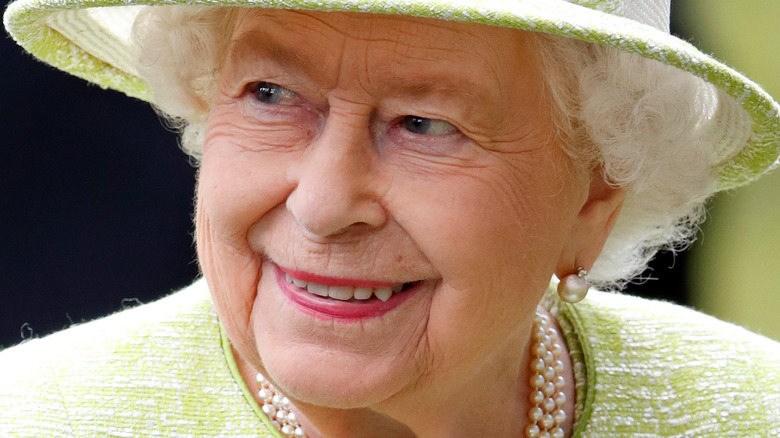Iron Ore Market Volatility: Understanding China's Steel Output Adjustments

Table of Contents
China's Steel Production and its Impact on Iron Ore Demand
The Sheer Scale of Chinese Steel Production
China's dominance in global steel production is undeniable. It accounts for well over half of the world's total steel output, making it the single largest consumer of iron ore globally. Any significant change in Chinese steel production directly and proportionally impacts global iron ore demand.
- Massive Production: China's steel production consistently surpasses 1 billion tonnes annually, dwarfing production in other countries.
- Infrastructure Boom: Massive infrastructure projects, from high-speed rail lines to sprawling new cities, fuel immense steel demand. The continuous expansion of China's infrastructure network is a primary driver of iron ore consumption.
- Manufacturing Powerhouse: China's vast manufacturing sector, producing everything from automobiles to appliances, relies heavily on steel as a critical raw material. This manufacturing activity significantly impacts global iron ore prices.
Government Regulations and Their Influence
The Chinese government actively intervenes in its steel industry, implementing policies to control pollution, manage economic growth, and shape the industry's future. These policies directly and often rapidly influence iron ore demand.
- Environmental Regulations: Stringent environmental regulations aimed at reducing emissions from steel mills frequently lead to temporary production cuts, affecting iron ore prices.
- Sustainable Steel Initiatives: Government initiatives promoting more sustainable and efficient steel production methods can impact the overall demand for iron ore, potentially reducing it in the long term.
- Economic Stimulus Packages: During economic slowdowns, government stimulus packages often include massive infrastructure projects, leading to a surge in steel production and a corresponding increase in iron ore demand.
Factors Influencing China's Steel Output Adjustments
Economic Growth and Infrastructure Spending
China's economic growth rate is strongly correlated with its steel demand. Periods of robust growth generally translate to increased steel production and higher iron ore prices. Conversely, slower economic growth leads to decreased steel production and lower prices.
- GDP Growth Correlation: Historical data clearly shows a strong positive correlation between China's GDP growth and its steel production.
- Infrastructure Investment: Government spending on infrastructure projects, such as roads, bridges, and high-speed rail, directly fuels steel demand. Large-scale infrastructure investment translates to increased iron ore imports.
- Statistical Evidence: Analyzing yearly statistics on infrastructure spending and steel production reveals a clear relationship, highlighting the influence of government policy on iron ore prices.
Real Estate Market Dynamics
The Chinese real estate sector is a significant consumer of steel, used extensively in construction. Fluctuations in this market directly impact steel production and iron ore demand.
- Real Estate and Steel Consumption: A booming real estate market drives up steel consumption, whereas a slowdown results in reduced demand.
- Government Cooling Measures: Government policies aimed at cooling down an overheated real estate market can significantly impact steel and iron ore demand.
- Investment Data: Tracking data on real estate investment, housing starts, and property sales provides crucial insights into future iron ore price movements.
Global Steel Demand and Competition
Global steel demand from outside of China plays a significant role, influencing China's market share and steel production.
- Global Economic Growth: Global economic growth increases overall steel demand, indirectly affecting China's production levels.
- International Trade: International trade policies, including tariffs and quotas, can impact the competitiveness of Chinese steel in the global market and thus affect production.
- Global Steel Production: The production levels in other major steel producing countries influence the overall global supply and demand dynamics, ultimately influencing the price of iron ore.
Predicting Iron Ore Market Volatility Based on Chinese Steel Output
Analyzing Key Indicators
Tracking specific economic indicators is critical for predicting iron ore price movements.
- Purchasing Managers' Index (PMI): The PMI provides an early indication of manufacturing activity, offering a glimpse into future steel demand.
- Construction Starts: Data on new construction projects provides insight into future steel consumption.
- Steel Mill Operating Rates: Monitoring the operating rates of steel mills offers a real-time picture of current production levels.
Utilizing Forecasting Models
Sophisticated forecasting models can help predict future steel output and its impact on iron ore prices.
- Econometric Models: These models use statistical methods to analyze the relationships between various economic variables, including GDP growth, real estate investment, and steel production.
- Time Series Analysis: This technique examines historical data on steel production and iron ore prices to identify patterns and trends. These patterns can be used to predict future price movements.
Conclusion
The volatility of the iron ore market is inextricably linked to China's steel output adjustments. Understanding the interplay between economic growth, government policies, and real estate market dynamics in China is essential for anticipating iron ore price movements. By carefully monitoring key indicators and utilizing sophisticated forecasting models, stakeholders can better navigate the risks associated with iron ore market volatility. Staying informed about changes in China's steel production is crucial for effectively managing your exposure in this dynamic commodity market and gaining a competitive advantage. Understanding iron ore market volatility is key to success in this sector.

Featured Posts
-
 Toddler Choking On Tomato Dramatic Police Rescue Caught On Bodycam
May 10, 2025
Toddler Choking On Tomato Dramatic Police Rescue Caught On Bodycam
May 10, 2025 -
 Inside The Queen Elizabeth 2 A Post Makeover Tour For Cruise Enthusiasts
May 10, 2025
Inside The Queen Elizabeth 2 A Post Makeover Tour For Cruise Enthusiasts
May 10, 2025 -
 National 2 Dijon 0 1 Concarneau Resume Du Match 28e Journee
May 10, 2025
National 2 Dijon 0 1 Concarneau Resume Du Match 28e Journee
May 10, 2025 -
 Dakota Johnson Ir Kraujingos Plintos Nuotraukos Visa Tiesa
May 10, 2025
Dakota Johnson Ir Kraujingos Plintos Nuotraukos Visa Tiesa
May 10, 2025 -
 Wynne Evans Seeks To Clear His Name With Fresh Evidence In Strictly Scandal
May 10, 2025
Wynne Evans Seeks To Clear His Name With Fresh Evidence In Strictly Scandal
May 10, 2025
